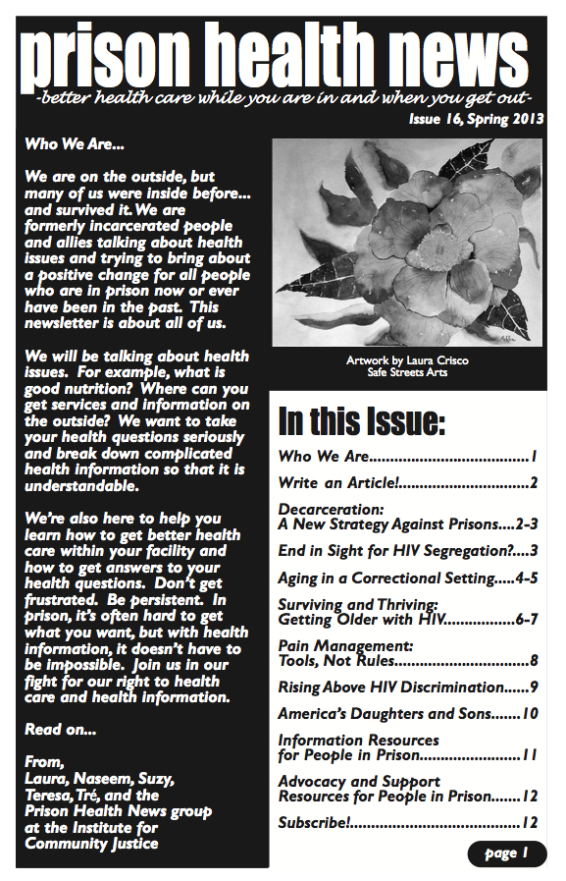You can download it as a pdf for reading by clicking here, or the printable version by clicking here. See the end of this post for helpful printing instructions.
Plus: Winter 2013 was one of my favorite issues of Prison Health News, with an article by Khalfani Malik Khaldun on how folks in solitary confinement in Indiana survive medical neglect, an interview with Joshua Glenn of the Youth Art and Self-Empowerment Project, a tribute to our mentor John Bell who recently passed away, and several articles on navigating mental health. Download it here. And don’t miss Summer 2012!
Prison Health News is a print newsletter read by about 5,000 people who are locked up in prisons and jails across the United States. It is produced by a Philadelphia-based collective of writers and editors and includes the work of imprisoned artists and writers. Our readers are living inside a system that denies them prevention tools and treatment information about HIV, hepatitis, and other health issues. They are dealing with medical neglect, daily humiliations driven by intense stigma, and the destruction of their communities by mass imprisonment.
Prison Health News is a project of the HIV/AIDS services organization Philadelphia FIGHT. Volunteers answer the many letters to us from people in prisons and jails asking for resources and health information.
To help distribute Prison Health News, contact:
Institute for Community Justice, Philadelphia FIGHT
21 S. 12th Street, 7th Floor
Philadelphia, PA 19107
Office: 215.525.0460
Fax: 215.525.0461
Instructions for printing Prison Health News on your home printer:
1. Download the printable version here.
2. Use Letter size (8 1/2 x 11) paper. Make sure that the printer is not set to reduce, or “scale” the document. On my Mac in Preview, I go under “File” and click on “Page Setup,” then make sure “Scale” is set to 100%. I don’t think it’s much different for other computers and programs.
3. In the printing options, select “Odd pages only.” Press print.
4. Half of the pamphlet will print. After it finishes printing, take the whole pile, flip it over, and insert it back into the printer. It usually has to be flipped over lengthwise, but you might want to make sure by using a test page.
5. In the printing options, select “Even pages only” and press print.






